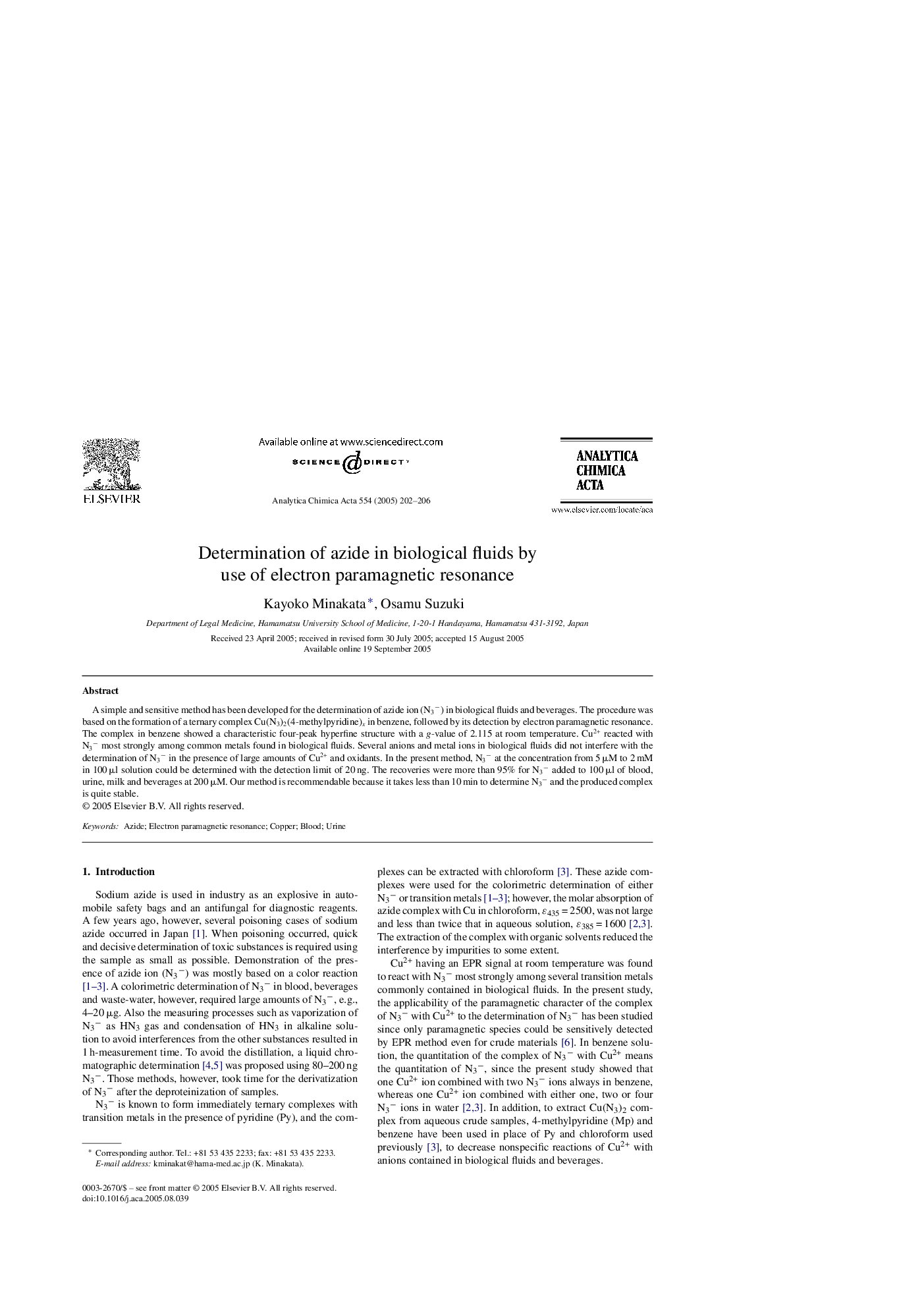| Article ID | Journal | Published Year | Pages | File Type |
|---|---|---|---|---|
| 9743310 | Analytica Chimica Acta | 2005 | 5 Pages |
Abstract
A simple and sensitive method has been developed for the determination of azide ion (N3â) in biological fluids and beverages. The procedure was based on the formation of a ternary complex Cu(N3)2(4-methylpyridine)x in benzene, followed by its detection by electron paramagnetic resonance. The complex in benzene showed a characteristic four-peak hyperfine structure with a g-value of 2.115 at room temperature. Cu2+ reacted with N3â most strongly among common metals found in biological fluids. Several anions and metal ions in biological fluids did not interfere with the determination of N3â in the presence of large amounts of Cu2+ and oxidants. In the present method, N3â at the concentration from 5 μM to 2 mM in 100 μl solution could be determined with the detection limit of 20 ng. The recoveries were more than 95% for N3â added to 100 μl of blood, urine, milk and beverages at 200 μM. Our method is recommendable because it takes less than 10 min to determine N3â and the produced complex is quite stable.
Related Topics
Physical Sciences and Engineering
Chemistry
Analytical Chemistry
Authors
Kayoko Minakata, Osamu Suzuki,
